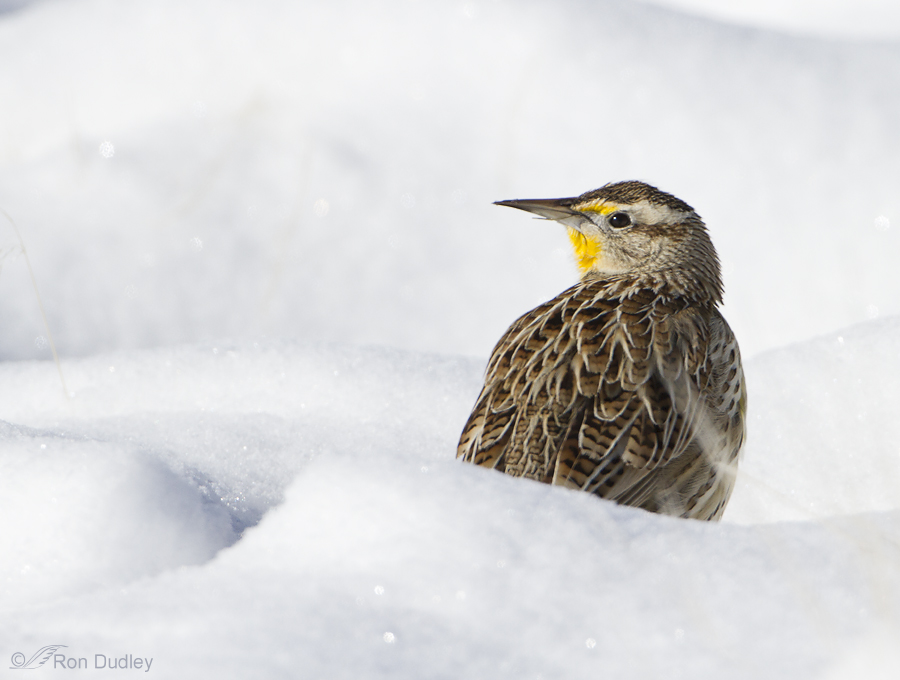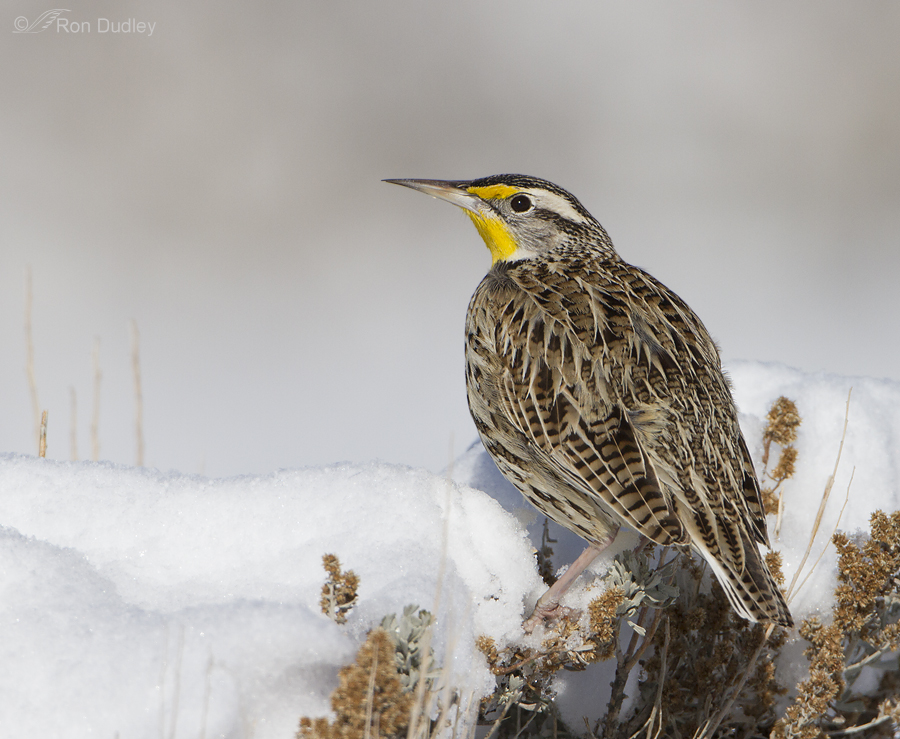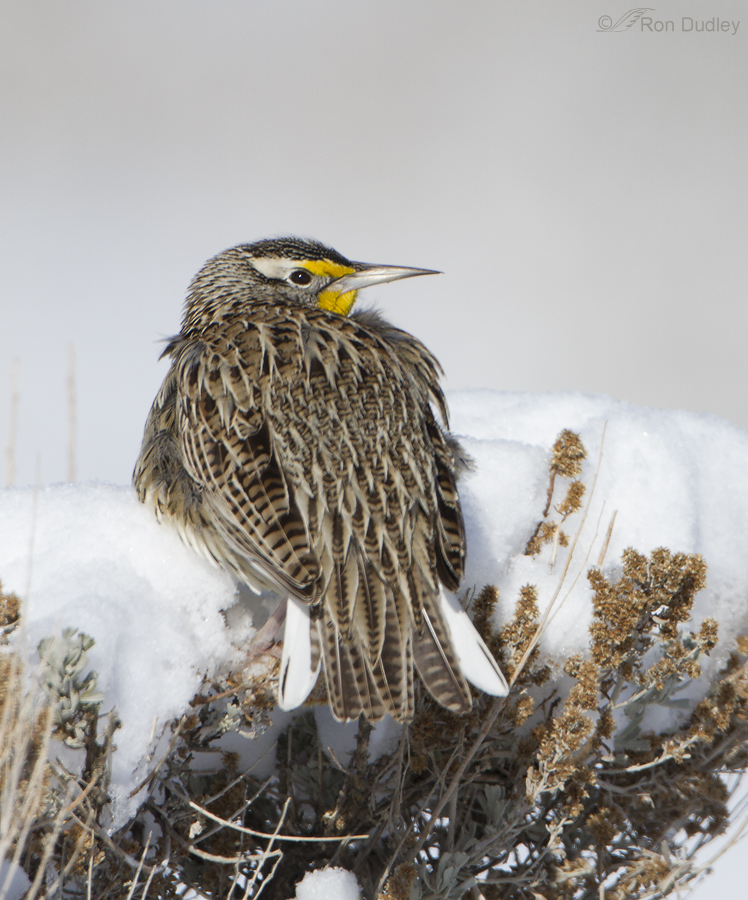Yesterday was a glorious day on the island with about 6″ of fresh snow and wonderful light. It was simply delightful. The Western Meadowlarks seemed to be a little “stickier” than usual, perhaps because of all the snow.

1/3200, f/6.3, ISO 500, 500 f/4, 1.4 tc, natural light
This one was half buried in the snow but I liked all the convolutions in the snowy setting.

1/3200, f/8, ISO 500, 500 f/4, 1.4 tc, natural light
This meadowlark was the most cooperative bird of the morning as it posed for me for over 6 minutes on top of some rabbitbrush.

1/2500, f/8, ISO 500, 500 f/4, 1.4 tc, natural light
It never did turn around to show that bright yellow breast but it did give me some nice head turns to make up for it.

1/2000, f/7.1, ISO 500, 500 f/4, 1.4 tc, natural light
Meadowlarks are well-known for a behavior called “tail flashing”, something they often do during territorial disputes. During tail flashing the tail is nervously (and very quickly) snapped open and closed, better revealing the white outer tail feathers. The bird was cooperating so well that I made it my goal to try to catch the tail spread to show those white feathers, which turned out to be much easier said than done. It happens so quickly that you just have to fire a burst and hope for the best. I took 208 shots of this bird (at least half of them were attempts to get the open tail) and only got the tail open a half-dozen times. And in most of those “spread- tailed” shots the meadowlark had its nictitating membrane closed or closing. I suspect that, for some reason, they close the membrane when they flick their tail.
Ron


I was most surprised to find 4 western meadowlarks in the Mission Valley of Montana on January 1. They look so odd in snow.
How enchanting. Thank you. And jealous thoughts about your snow as I bake.
I love the back, profile views, precisely because they show the plumage’s pattern.
Thank you, Sharon, Dave and Tana. Hope you saw some raptors in Teasdale while you were there, Tana.
Lovely birds, we had quite a few to watch in Teasdale this week! Thanks for the pics!
Ron:
Subjects and backgrounds to die for! Beautiful images.
Beautiful!
Great shots, Ron. I guess you may have the problem as I, trying to get frontal shots showing their yellow breasts. But these are beautiful anyway, with the nice head turns that you got.
Thanks, Bob. To be perfectly honest, I’ve come to like the shots of this species from behind (not showing the yellow breast) at least as much as I do the others because I like the plumage patterns on the back and I don’t have to be concerned with blowing out those bright yellows.
What a wonderful series! Thanks for sharing these. For some reason I never get close enough to really see or photograph a meadowlark. These are better than “being there.”
Thank you, Charlotte. I find that for most of the year meadowlarks are, as you say, difficult to approach. But in the springtime when these birds are “feeling their oats” they’re much easier to get close to. I’m not sure why this individual was more cooperative yesterday, unless it was because of the snow and cold.